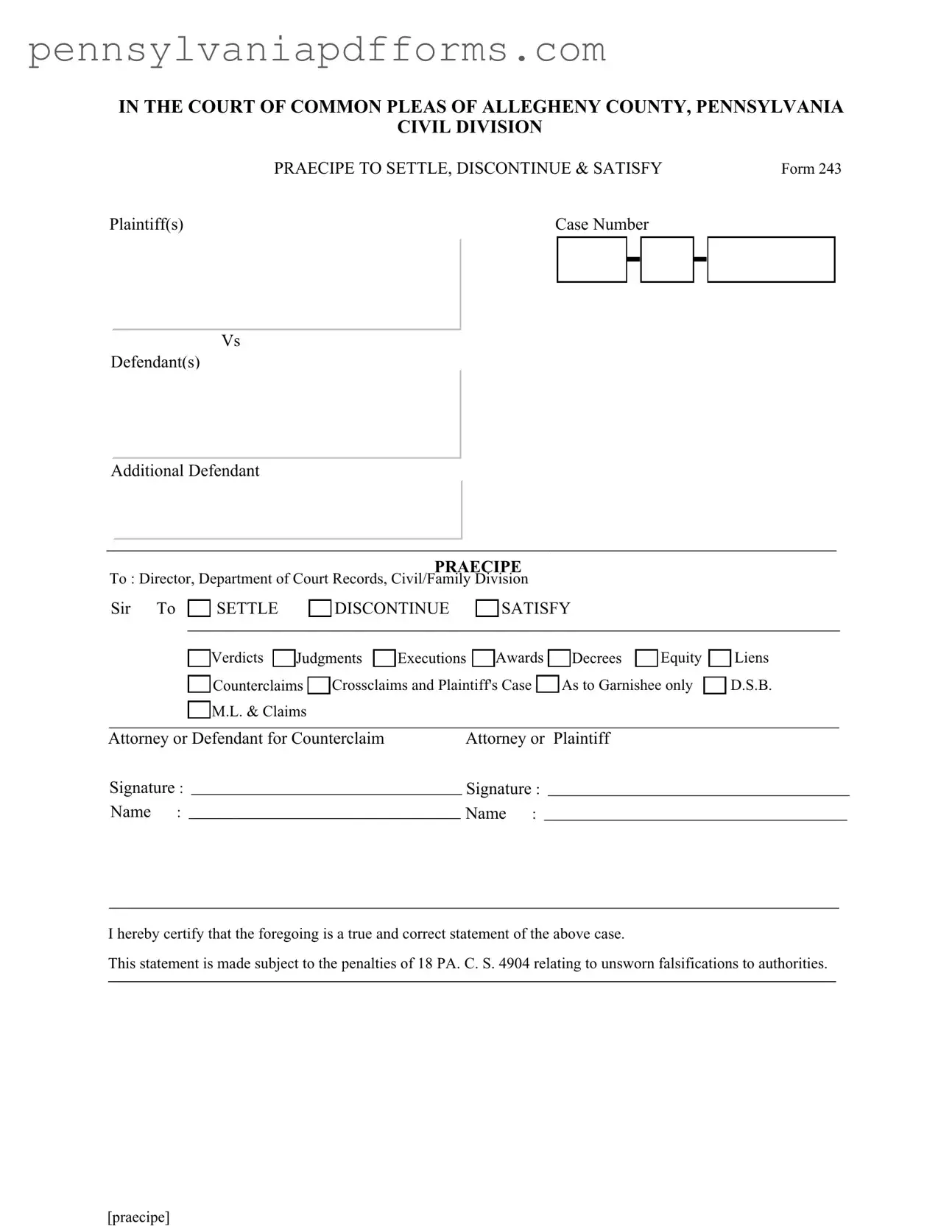Filling out the Pennsylvania 243 form can be straightforward, but many people stumble upon common pitfalls that can lead to delays or complications. One frequent mistake is failing to include the correct case number. This number is essential for the court to identify your case accurately. Without it, your submission may be misfiled or even ignored.
Another common error is neglecting to specify the appropriate action you wish to take, such as to settle, discontinue, or satisfy. Each option has different implications, and being vague can lead to confusion. Make sure to clearly indicate your intention to avoid any misunderstandings.
Many individuals also forget to sign the form. A signature is not just a formality; it serves as a declaration of the information provided. Without it, the court may reject your filing outright. Similarly, omitting the names of all parties involved, including additional defendants, can complicate the process. Ensure that every relevant party is listed to prevent any legal hiccups.
In addition, people often overlook the importance of providing accurate names and titles. Misspellings or incorrect titles can create issues down the line. Double-checking names can save time and prevent unnecessary complications.
Another mistake is failing to certify the statement accurately. The certification at the end of the form is crucial. It affirms that the information you provided is true and correct. If this section is not completed properly, you could face penalties for providing false information.
Moreover, many individuals do not keep a copy of the completed form for their records. Having a copy is vital for your own reference and can be useful if any questions arise later. It’s a simple step that can save you from potential headaches.
People also tend to rush through the form, which can lead to careless errors. Taking the time to read through the instructions and the completed form can help catch mistakes that might otherwise go unnoticed. It’s worth the extra effort to ensure accuracy.
Some individuals may not be aware of the specific requirements for filing in Allegheny County. Each county may have its own rules or additional forms that need to be completed. Familiarizing yourself with local requirements can save you time and frustration.
Lastly, not seeking assistance when unsure can lead to mistakes. If you have questions or need clarification, consider reaching out to a legal professional. They can provide guidance and help ensure that your form is completed correctly.





